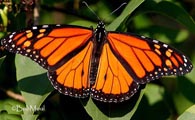Native Plants
Search for native plants by scientific name, common name or family. If you are not sure what you are looking for, try the Combination Search or our Recommended Species lists.
Asclepias sullivantii
Asclepias sullivantii Engelm. ex A. Gray
Prairie Milkweed, Sullivant's Milkweed, Smooth Milkweed
Asclepiadaceae (Milkweed Family)
Synonym(s):
USDA Symbol: assu3
USDA Native Status: L48 (N), CAN (N)
One to several stout, erect stems, 2-3 ft. tall, bear large, domed clusters of pink or pinkish-white flowers at the top or on stalks from leaf axils. Leaves are oval, thick, and somewhat succulent.
Threatened in MI, MN, WI.
Plant Characteristics
Duration: PerennialHabit: Herb
Root Type: Tap
Leaf Complexity: Simple
Leaf Shape: Ovate
Leaf Venation: Pinnate
Fruit Type: Follicle
Size Notes: Up to about 3 feet tall.
Bloom Information
Bloom Color: PinkBloom Time: Jun , Jul , Aug
Distribution
USA: AR , IA , IL , IN , KS , MI , MN , MO , ND , NE , OH , OK , SD , WICanada: ON
Native Distribution: S. Ont. to MN, s. to OH, KY, n. AR & e. KS
Native Habitat: Prairie, Meadow, Field, Wet Meadow, Prairie, Field
Growing Conditions
Water Use: MediumLight Requirement: Sun
Soil Moisture: Moist , Wet
Soil Description: Various moist soils.
Conditions Comments: Not picky.
Benefit
Warning: All plants in the genus Asclepias are probably somewhat toxic, some fatally so, to both humans and animals. The sap of some causes skin irritation in humans. POISONOUS PARTS: All parts. Toxic only in large quantities. Syptoms include, vomiting, stupor, weakness, spasms. Toxic Principle: Cardiac glycosides and resinoids. (Poisonous Plants of N.C. State)Conspicuous Flowers: yes
Fragrant Flowers: yes
Attracts: Butterflies
Larval Host: Monarch
Value to Beneficial Insects
Special Value to Native BeesSpecial Value to Bumble Bees
Special Value to Honey Bees
Supports Conservation Biological Control
This information was provided by the Pollinator Program at The Xerces Society for Invertebrate Conservation.
Butterflies and Moths of North America (BAMONA)
|
Monarch (Danaus plexippus)  Larval Host |
Propagation
Description: Root cuttings can be taken in fall or early spring. Seeds may be sown outside in late fall or the following spring. Germination of spring-planted seeds is enhanced by moist stratification.Seed Treatment: Stratify 3 months at 40 degrees.
Commercially Avail: yes
Find Seed or Plants
View propagation protocol from Native Plants Network.
Bibliography
Bibref 1186 - Field Guide to Moths of Eastern North America (2005) Covell, C.V., Jr.Bibref 1185 - Field Guide to Western Butterflies (Peterson Field Guides) (1999) Opler, P.A. and A.B. Wright
Bibref 946 - Gardening with Prairie Plants: How to Create Beautiful Native Landscapes (2002) Wasowski, Sally
Bibref 1294 - The Midwestern Native Garden: Native Alternatives to Nonnative Flowers and Plants An Illustrated Guide (2011) Adelman, Charlotte and Schwartz, Bernard L.
Search More Titles in Bibliography
Additional resources
USDA: Find Asclepias sullivantii in USDA PlantsFNA: Find Asclepias sullivantii in the Flora of North America (if available)
Google: Search Google for Asclepias sullivantii
Metadata
Record Modified: 2014-11-02Research By: TWC Staff